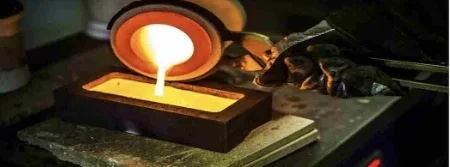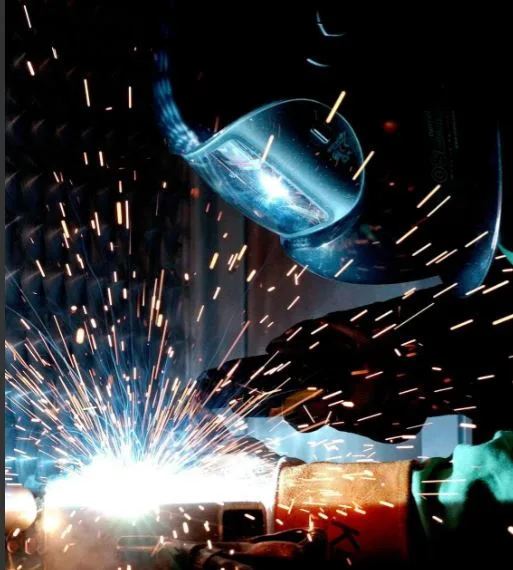How to recycle gold at home?
Recycling gold at home might sound like something out of a jeweler’s workshop, but the truth is it’s more doable than you think. Whether you’re sitting on a box of broken jewelry or simply want to learn how to breathe new life into unused gold, this guide will walk you through the basics. We’ll explore popular home methods, the tools you’ll need, and smart tips to make the most out of your efforts.
Why Recycle Gold at Home?
Gold is valuable—no surprise there. But what’s often overlooked is how much of it sits unused in old rings, broken chains, outdated pieces, or even e-waste. Recycling gold at home isn’t just a cost-saving hobby, it’s also environmentally responsible and can even turn into a profitable side project.
Common Home Methods for Recycling Gold
There are several methods to recycle gold at home, and each comes with its own pros and cons. Let’s break them down.
1. Traditional Fuels (Coal, Charcoal, Wood)
One of the oldest ways to melt gold involves traditional fuels. By using coal or charcoal, you can reach the temperatures needed to melt small amounts of gold—typically around 1,064°C (1,948°F).
Pros:
- Inexpensive setup
- No need for electricity
- Suitable for very small batches
Cons:
- Hard to control temperature accurately
- More smoke and mess
- Takes longer to heat gold evenly
This method might work for DIY enthusiasts on a tight budget, but it’s not ideal if you want precision or cleaner results.
2. Flame Guns (Butane or Propane Torches)
Flame guns are another popular tool for small-scale gold melting. They offer a direct flame and higher temperature control compared to traditional fuels.
Pros:
- Portable and affordable
- Faster melting process
- Good for melting small jewelry pieces
Cons:
- Limited capacity
- Higher risk of overheating and burning off gold
- Less suitable for consistent results
While handy, this method requires attention and care. Make sure to use proper safety equipment—gloves, goggles, and a well-ventilated workspace are a must.
3. Small Induction Melting Furnaces
If you’re serious about gold recycling, investing in an induction gold melting furnace is a smart move. These machines use electromagnetic fields to generate heat, providing precise temperature control and a clean melt.
Pros:
- Very accurate temperature regulation
- Fast and energy-efficient
- Safer and cleaner than open flames
Cons:
- Higher initial cost
- Needs a stable electricity source
- More setup and storage space required
Among all home methods, an induction furnace stands out for its speed, safety, and control. It’s especially useful if you plan to recycle gold frequently or in larger volumes.
Step-by-Step: How to Recycle Gold at Home
If you’re new to the process, don’t worry we’ve outlined the detailed gold melting steps and tools you’ll need to get started. Here’s a quick overview:
- Collect and Sort: Gather unwanted gold pieces. Check for purity marks (e.g., 10K, 14K, 18K).
- Weigh the Gold: Use a digital scale to know how much you’re working with.
- Clean the Metal: Remove dirt, stones, or soldering with a file or pick.
- Melt the Gold: Choose your preferred method (charcoal, flame gun, or induction furnace) and melt the gold in a crucible.
- Pour into Molds: Pour the melted gold into a mold to form bars or small ingots.
- Cool and Polish: Let it cool, then polish the surface if needed.
Following the proper steps ensures the process is smooth, safe, and successful.
How to Reduce the Loss of Gold During Melting
One major concern people have when melting gold at home is losing material in the process. Fortunately, there are techniques for how to reduce the loss of gold that you can easily apply:
- Use a quality crucible that can handle high heat without reacting with the metal.
- Avoid overheating, as excessive heat can lead to metal vaporization.
- Melt in a clean, enclosed space to minimize gold particles escaping as dust or smoke.
- Add flux, a chemical that helps separate impurities and prevents loss during melting.
Being precise and cautious goes a long way in keeping your gold safe.
Which Method Should You Choose?
Here’s a simple breakdown:
| Method | Best For | Budget | Ease of Use | Efficiency |
| Traditional Fuels | Hobbyists | Low | Moderate | Low |
| Flame Guns | Occasional use | Medium | Moderate | Medium |
| Induction Furnaces | Frequent recyclers | High | Easy | High |
If you’re just experimenting, start small with a flame gun. But if you’re looking to make a real return or value precision, investing in an induction gold melting furnace is the way to go.
Final Thoughts
Recycling gold at home isn’t just about saving money—it’s a satisfying skill that connects you to a centuries-old craft. With the right setup, tools, and safety precautions, anyone can start transforming old jewelry into something new and valuable.
Whether you’re using a traditional coal setup or a high-tech furnace, just follow the detailed gold melting steps and tools and remember the importance of how to reduce the loss of gold during the process.
So roll up your sleeves and give gold recycling a go—it’s worth its weight, literally.





